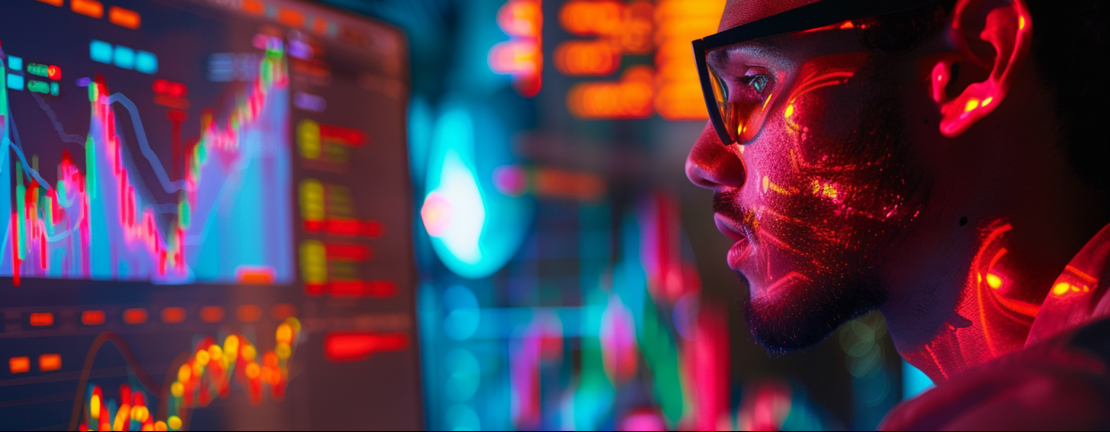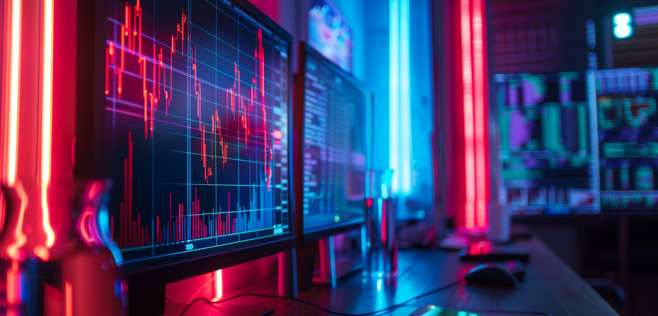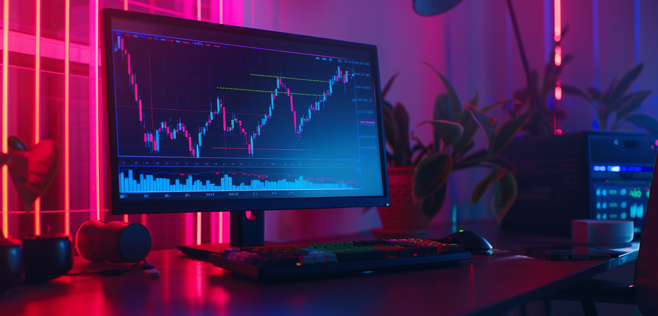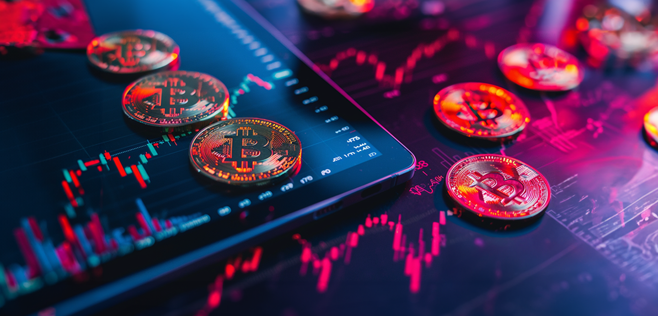Published 22 May 2025
Using AI to Analyze Crypto Charts (Even Without Technical Skills)

AI can help you trade crypto without needing to study charts or learn technical analysis. It works non-stop, tracks the market 24/7, and spots patterns faster than any person can.
Even if you’ve never traded before, AI tools make it easier to understand what’s happening on the market. They look at price data, news, social media trends, and more — and they don’t get tired, distracted, or emotional.
This article shows how you can use AI to read crypto charts, make smarter decisions, and avoid common mistakes — even without technical skills.

What AI Does in Crypto Chart Analysis
AI helps you understand crypto charts without doing the hard work yourself. It scans huge amounts of data in seconds — price history, market signals, even social media posts. Then it shows patterns that would take hours to find manually.
How AI spots patterns in price data
AI finds patterns that many traders miss. It looks at past prices, technical indicators, and news to guess what might happen next. It also connects data in ways that traditional tools don’t.
Let’s say you're tracking Ethereum. AI can look at moving averages, RSI, and Bollinger Bands all at once. At the same time, it checks news headlines and blockchain activity to give a full view of the market. And it keeps learning — the more data it gets, the better its predictions.
How machine learning helps
Machine learning is a part of AI that improves over time. It works in three ways:
-
Supervised learning: uses known data (like past price moves) to predict future ones
-
Unsupervised learning: finds patterns in raw data without any labels
-
Reinforcement learning: tests different strategies to find what works best
One of the most useful tools is the LSTM neural network. It’s good at reading price movements over time. In one study, an AI strategy using LSTM turned a 2018–2024 Bitcoin portfolio into a 1640% return — way ahead of basic models or buy-and-hold.

Why AI Is Useful for Beginners
If you’re new to crypto trading, AI tools can make things easier from day one. You don’t need to know charts, trends, or indicators. The AI handles that for you — and it doesn’t make decisions based on fear or hype.
AI stays focused. It runs 24/7 and never misses a trading signal because it’s tired or distracted. While you sleep, it watches the market and reacts if something important happens.
It also pulls data from everywhere — not just charts. AI checks news, social media, even global events to give you a bigger picture. That’s something most beginners just can’t do manually.
Most importantly, beginner platforms are made for non-tech users. You get ready-made strategies, simple dashboards, and step-by-step setups. You don’t need to write code or understand complex math. You just choose a plan, set your risk level, and let the system work.

Benefits of Using AI for Crypto Trading
AI gives crypto traders three big advantages: it’s fast, it doesn’t get emotional, and it works all the time.
Fast decisions from real-time data
AI can read the market and act in milliseconds. It spots trends, runs the numbers, and places trades way faster than any human. During the 2021 Bitcoin bull run, some AI bots made trades based on social media sentiment and blockchain signals — all within minutes.
High-frequency traders use this speed to catch tiny price differences between exchanges. AI makes that possible by reacting instantly to new data. That means less delay, more accuracy, and more chances to profit.
No emotions, just logic
Human traders often make bad calls because of fear, greed, or stress. AI doesn’t have that problem. It sticks to the plan — no second-guessing, no panic-selling. It avoids common traps like:
-
Confirmation bias — only seeing what you want to see
-
Loss aversion — holding onto bad trades too long
-
Herd behavior — copying what others do without thinking
AI just follows the data. For example, during the 2022 LUNA crash, some AI bots shut down risky trades early — saving users from huge losses.
Always watching the market
Crypto doesn’t sleep. It runs 24/7, unlike stocks. That’s hard for people to keep up with — but not for AI.
AI systems check prices, news, and portfolio changes all day and night. If Cardano (ADA) jumps at 3 a.m., your bot can act before you even wake up. Some platforms scan and update every hour, so you never miss a move.
These three strengths — speed, logic, and non-stop tracking — make AI a powerful partner in the crypto market.

How to Use AI Tools Without Technical Skills
You don’t need to be a developer to start using AI in crypto trading. Many platforms are built for beginners — no coding, no charts, no problem.
Step 1: Pick a simple AI platform
Choose a platform with a clean, easy-to-use interface. It should have:
- Clear setup instructions
- Good security (2FA, secure API)
- Support for major exchanges like Binance or Coinbase
- Honest reviews and a solid reputation
- Pricing that fits your budget (most cost between $30 and $100 a month)
Examples:
- Coinrule — good for beginners, with lots of rules and templates
- Cryptohopper — ready-made strategies and simple controls
- 3Commas — more advanced, but still beginner-friendly with helpful guides
Step 2: Use built-in strategies and templates
Most platforms offer ready-made setups. Start there.
- Use strategy templates — sites like Kryll.io let you pick one and go
- Explore marketplaces — on 3Commas, you can link to signals from experienced traders
- Try drag-and-drop builders — great for non-tech users who want custom setups without coding
These tools save time and help you trade like a pro from day one.
Step 3: Set up alerts and automation
Once your strategy is ready, turn on automation:
-
Get alerts — via email, Telegram, or Slack when something changes
-
Set your limits — define stop-loss, take-profit, and max trade size
-
Start with paper trading — test your setup with fake money first
This way, you stay in control but don’t have to watch the market 24/7.

Choosing the Right AI Crypto Trading Platform
Picking the right platform makes a big difference. You want something safe, simple, and built for the way you trade.
What to look for
Start with security. Make sure the platform offers:
-
Two-factor authentication
-
Encrypted connections
-
Safe API access
Next, check if it works with your exchange (like Binance, Coinbase, or Kraken). Some platforms don’t support every marketplace.
Then look at the interface. Beginners need a clean layout, not a dashboard full of charts and code. The platform should match your skill level.
Also check:
-
Can you backtest strategies using past data?
-
Is support easy to reach if something breaks?
-
Can you use it on your phone?
-
Does it include tools like stop-loss automation or portfolio tracking?
Best platforms for beginners
Here are a few beginner-friendly options:
-
3Commas — has SmartTrade tools and a simple layout
-
Pionex — offers built-in bots with zero setup
-
Coinrule — great for custom rules with no coding
-
Shrimpy — lets you copy trades from experts
-
Mudrex — has a visual builder for drag-and-drop strategies
-
TradeSanta — connects to TradingView and simplifies signals
Free vs Paid tools
Some tools are free. Others charge $30–$100 a month. A few cost over $200, but they’re mostly for pros.
Examples:
-
Pionex — free bots, just pay a 0.05% fee per trade
-
Coinrule (free plan) — limited to 2 live rules and low monthly volume
-
Cryptohopper — free plan with fewer positions; $99/month unlocks full features
Most beginners do fine with mid-tier plans. They offer enough tools without costing too much.

Managing Risks When Using AI for Crypto
AI tools help, but they don’t remove risk. You still need to set limits and stay involved.
Use stop-loss and take-profit
Always set clear exit points.
- For short trades (scalping), use tight stop-losses — around 0.2%–0.5%
- For longer trades (swing), give more room — 5%–10%
- Add take-profit targets so the bot knows when to lock in gains
Some bots let you use trailing stops. These move with the market and help protect profits as prices rise.
A simple rule: never risk more than 1% of your total balance on a single trade. Good AI bots adjust stop-losses in real time based on market moves.
Watch your bot
AI isn’t “set it and forget it”. You need to check in.
- Review daily: did stop-losses trigger? Did any trades fail?
- Set drawdown limits — for example, pause all trading if you lose 10% in one day
- Test new setups with paper trading before using real money
This keeps you safe and helps you fix problems early.
Don’t fully rely on automation
Even smart bots can’t predict everything — outages, news shocks, major crashes.
You should:
- Know when to take control manually
- Pause the bot if something looks off
- Stay ready to act when the market gets weird
Let AI do the routine work — but leave the big calls to you.

Conclusion
AI makes crypto chart analysis easier — even if you’ve never traded before. It finds patterns, removes emotions, and watches the market non-stop. That’s a big advantage in a space that moves fast and never sleeps.
Beginners can start right away. Many platforms offer pre-made strategies and simple controls — no coding needed. Tools like 3Commas, Coinrule, and Pionex are built for users without technical experience.
Still, AI isn’t magic. You need to manage risks, set stop-losses, and check performance. And while the bot runs the numbers, you stay in charge of the big picture. Crypto markets keep evolving. AI tools evolve with them. If you use them right, they can give you a real edge — without needing to become a chart expert.
Read More




 Get RateX Pro
Get RateX Pro

 06 Jun 2024
06 Jun 2024
